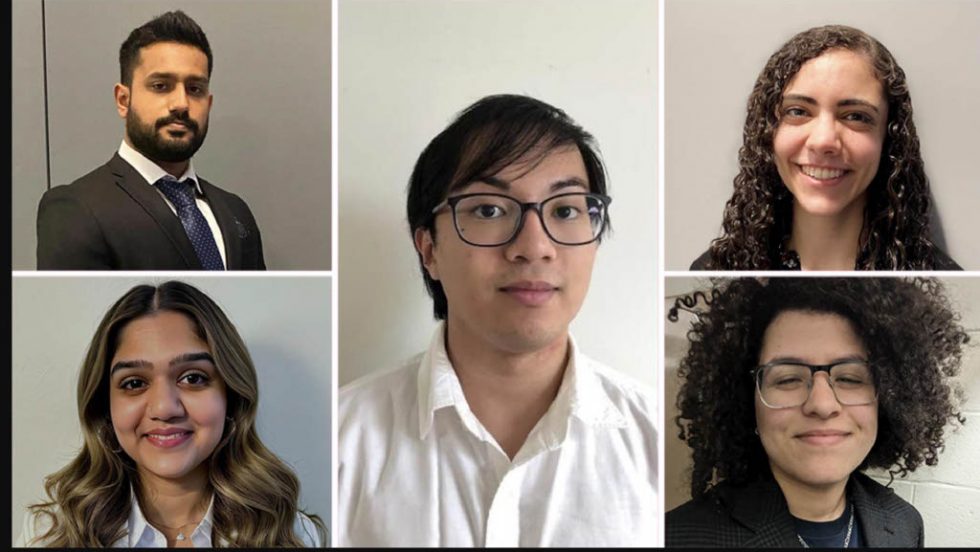
From software engineering to teaching to research, alumni find common ground in their Adelphi experience.
A degree in physics can lead you to a challenging career in academia, wrestling with the workings of the universe. But it can take you many other rewarding directions as well—a proposition our graduates prove again and again. Studying physics trains the mind in problem-solving and analytical thinking, contributing to a truly 21st-century skill set. Adelphi physics students have gone on to become successful engineers (civil, biomedical, electrical or mechanical), researchers, computational scientists and teachers.
“We have found that students who come here willing to learn and work hard truly have boundless opportunities—something that is rare today,” said Matthew Wright, PhD, associate professor and chair of physics. “This is because of a combination of physics being one of the best platforms to accomplish anything you want and how much our award-winning faculty and staff care about their students.”
Meet recent physics graduates and learn how they’ve used their degrees to succeed in their respective careers.
Muhammad Aziz ‘18: Design Engineer, Tektronix
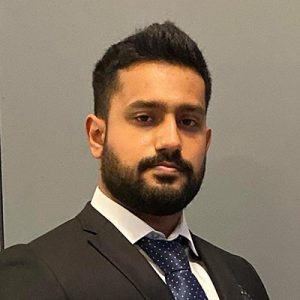 Muhammad Aziz ‘18—now an engineer at Tektronix in Beaverton, Oregon—has come a long way from his native Lahore, Pakistan. But he followed in the footsteps of his brother and sister, both Adelphi graduates, and found a community at his alma mater. Adelphi gave him the opportunity to intern at the CERN Laboratory in Switzerland, home of the world’s largest particle accelerator, and to pursue a joint degree at Columbia University.
Muhammad Aziz ‘18—now an engineer at Tektronix in Beaverton, Oregon—has come a long way from his native Lahore, Pakistan. But he followed in the footsteps of his brother and sister, both Adelphi graduates, and found a community at his alma mater. Adelphi gave him the opportunity to intern at the CERN Laboratory in Switzerland, home of the world’s largest particle accelerator, and to pursue a joint degree at Columbia University.
“The analytical and math skills I gained at Adelphi during my physics major help me in my role as a design engineer,” he said. “Adelphi had a combined physics/engineering program with Columbia so I got the opportunity to get an electrical engineering degree which helped me get into my current career choice.”
Zeenat Baig ‘19: Software Engineer at JPMorgan Chase & Co.
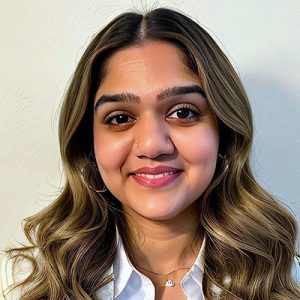 Zeenat Baig ‘19’s interest in problem-solving and analytical thinking drew her toward the joint physics/engineering degree program with Columbia University. Today, she works as a software engineer at JP Morgan Chase & Co. in Chicago.
Zeenat Baig ‘19’s interest in problem-solving and analytical thinking drew her toward the joint physics/engineering degree program with Columbia University. Today, she works as a software engineer at JP Morgan Chase & Co. in Chicago.
“I really like that the physics department stressed the idea of being able to use our physics degrees in different careers,” she said. “I had decided to take multiple programming classes while being a physics major. I realized how programming could be a huge tool in almost every environment. I actually did an internship with the Department of Energy in a biochem lab and showed the team how to use programs like MATLAB and Mathematica as a way to automate their data summary.”
Baig’s interest in problem-solving also led her to try to create a program that would solve sudoku puzzles. “I remember walking into Dr. Wright’s office and telling him I wasn’t able to figure it out, however, I learned so much from that project,” she said. “I realized how important it is to make mistakes.”
Allan Delarosa ‘18: Software Engineer, Amazon Web Services
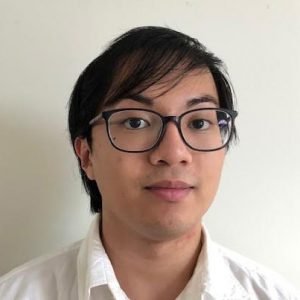 Currently working as a software engineer at Amazon Web Services based in Washington, D.C., Allan Delarosa ‘18 credits a “generous scholarship” for helping him make the decision to enroll at Adelphi.
Currently working as a software engineer at Amazon Web Services based in Washington, D.C., Allan Delarosa ‘18 credits a “generous scholarship” for helping him make the decision to enroll at Adelphi.
“Many of the problems I need to solve in my job require working backward from a customer requirement, or working around a technical limitation or time constraint,” he said. “While it might not seem directly related, a lot of physics problems require you to take axioms like those and use your knowledge and technical ability to come up with a solution. Many of the improvements I’ve implemented or proposed in my role required diving deep into areas others might not have thought to look into or even seemed obvious in hindsight. Others who pursued a degree in something more specific to the industry might have some domain-specific knowledge, but the unique approach I’m able to provide is highly valued in my current role.”
Carissa Giuliano ‘21, MA ‘22: Physics Teacher, Mineola High School—and Adelphi
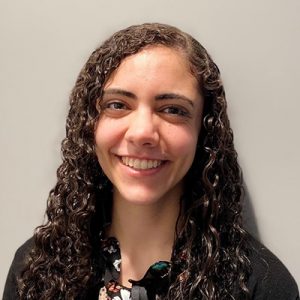 Carissa Giuliano ‘21, MA ‘22, followed her sister to Adelphi. She knew she wanted to teach, but found her direction in the physics department. She earned a bachelor’s degree in physics in 2021 and her master’s in adolescent education at Adelphi the following year. She fulfilled her student teaching requirement at Mineola High School, where she currently teaches physics. She’s also returned to her alma mater, teaching physics labs at Adelphi.
Carissa Giuliano ‘21, MA ‘22, followed her sister to Adelphi. She knew she wanted to teach, but found her direction in the physics department. She earned a bachelor’s degree in physics in 2021 and her master’s in adolescent education at Adelphi the following year. She fulfilled her student teaching requirement at Mineola High School, where she currently teaches physics. She’s also returned to her alma mater, teaching physics labs at Adelphi.
“My physics background from Adelphi taught me how to reason through scientific phenomena and interpret scientific resources,” she explained. “This has been hugely beneficial as a teacher. When my students ask me how something works, I can often draw on my physics background and give them a scientifically sound answer, even if it isn’t a question I’ve encountered before.”
Giuliano said that through her education courses and as a tutor and recitation instructor in the Learning Center, “I learned how to interact with students, how to design lessons, and most of all, how to reflect and improve as an educator.”
Tara Peña ‘17, PhD: Postdoctoral Scholar at Stanford University
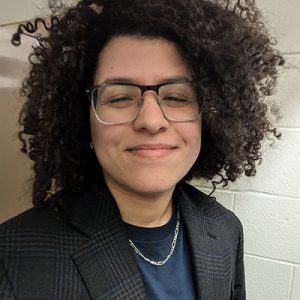 As is the case for many Adelphi physics graduates, the joint degree program with Columbia was what appealed to Dr. Peña. Her initial plan was to get her degrees and get a job, but she fell in love with research. After earning her BS in Physics, she obtained an MS and then a doctorate in electrical and electronics engineering and is now a postdoctoral scholar examining 2D-based device structures at Stanford University.
As is the case for many Adelphi physics graduates, the joint degree program with Columbia was what appealed to Dr. Peña. Her initial plan was to get her degrees and get a job, but she fell in love with research. After earning her BS in Physics, she obtained an MS and then a doctorate in electrical and electronics engineering and is now a postdoctoral scholar examining 2D-based device structures at Stanford University.
The personal attention and tailored education she got at Adelphi is something upon which Dr. Peña still draws as a postdoctoral scholar at Stanford University. When her cohort was excited about electrical engineering, their professor, Sean Bentley, PhD, “added an intro to semiconductor physics course for a few of us, which I’ve used every day onward as a graduate student and now as a postdoctoral researcher,” she said.
As a member of Adelphi’s Physics Club, she participated in Lab for Kids, in which “members lead and demo various experiments for local middle school students,” she said, adding that “I hope to host and continue similar outreach programs for K-12 students as a postdoc and onward.”